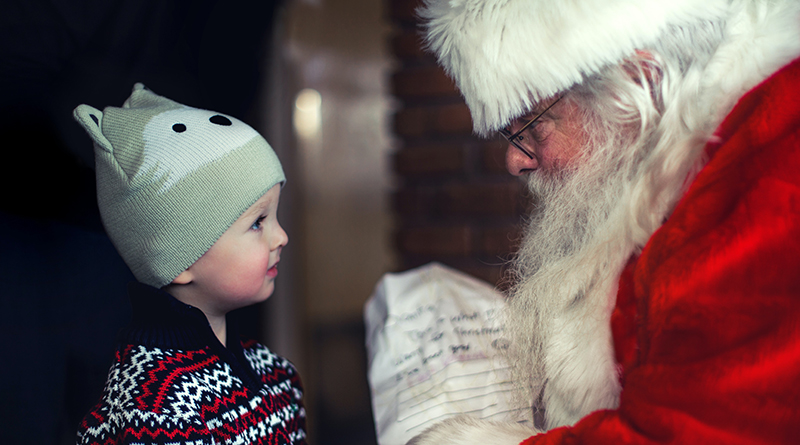200 Years Of Santa Claus ~ The History of Ordinary Things

The European holiday customs centered around St. Nicholas, a charitable Catholic Turkish Bishop born in the 4th century, was associated with gift giving to children on December 6, St. Nicholas Day.
In America, circa 1800s, the Puritans and other Calvinists had eliminated Christmas as a holy season under the premise that a Christmas observance was inconsistent with gospel worship. Presbyterians, Baptists, Quakers, and other Protestants regarded December 25th as a day without religious significance. In fact, it was a day for normal business. The holiday season was a time when workers and servants took the upper hand, demanding gifts for their labor. The season was characterized by raucous, drunken mobs roaming the streets, damaging property, threatening and frightening the upper classes.
During this period a new understanding of family life and the place of children was emerging. Childhood became seen as a time in which greater protection, sheltering, training, and education were needed. In this light the season began to be tamed, turning toward home, family and neighbors.
St. Nicholas, typically dressed in a bishop’s robe and holding a staff, took on new attributes in America. In 1821 an anonymous poem and illustrations in the book, The Children’s Friend, proved pivotal in shifting the story and imagery away from St. Nicholas. In the poem, Sante Claus was portrayed in a didactic mode, rewarding good behavior and punishing bad. He aided parents by serving in judgement of whether children were naughty or nice. Notably, the book had Sante Claus arrive on Christmas Eve, rather than December 6th. This Sante Claus came from the North in a sleigh with a single flying reindeer.
The image of St. Nickolas was recast in 1823, from a poem, A Visit from St. Nicholas. Today it is better known as The Night Before Christmas. Its author remained unknown until 1837, when it appeared in The New York Book of Poetry credited to a wealthy biblical scholar, Clement Clarke Moore. It is reported that he wrote the poem in the sleigh on his way to buy the Christmas turkey. Legend has it that the description of Santa Claus resembled the Dutch handyman who drove his sleigh that night…” a broad face and a little round belly”. Moore read the poem to his wife and 6 children but considered the poem too frivolous to publish. A friend submitted it anonymously to The Sentinel, a Troy, NY newspaper, in 1823, 200 years ago.
The Night Before Christmas recast St. Nicholas as a jolly, plumb, rosy-cheeked character who brought gifts to children. The poem had enormous influence on the American image of St. Nicholas in a red suit and black boots. It also introduced his team of flying reindeer with their catchy names, “Now, Dasher! Now, Dancer! Now, Prancer and Vixon! On, Comet! On, Cupid! On, Donner and Blitzen!”
As a historical note, the growth of Sunday Schools by mid-1800s had exposed hundreds of thousands of children to Christianity. To improve Sunday School attendance churches enticed children with a Christmas tree, Santa Claus and gifts. By the 1850s, churches in America had re-introduced Christmas observances.
The Night Before Christmas was first illustrated in 1848. The poem of 28 rhyming couplets (56 lines) provides only a general description of Santa Claus which has allowed many illustrators to interpret how Santa Claus looks. In recent versions, the pipe and smoke have disappeared, and often Santa Claus has lost weight!
=
Haddon Sundblom, an illustrator for The Coca-Cola Company, cast the familiar Santa Claus of our generation with his wholesome and realistic image. It debuted in 1931 and again each year until 1964.
The final line, originally written as “Happy Christmas to All”, was replaced with Merry Christmas in 1832. In an ode to tradition, “Happy Christmas to All and to All a Good Night.”
- Rain & Shine, A Millennia Of Innovation: The History of Ordinary Things - July 19, 2024
- Crayons Through The Ages ~ The History of Ordinary Things - June 21, 2024
- The Rocking Chair Revolution ~ The History of Ordinary Things - May 24, 2024


